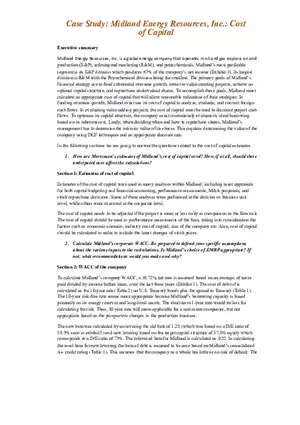Lecture Note
Revolutionizing Business Finance - An Innovative Approach
-
University:
Swansea University -
Course:
FIN520 | Financial Ethics and Accountability Academic year:
2021
-
Views:
351
Pages:
1
Author:
Maria C.
Related Documents
- Economics - Aggregate Output, Prices, and Economic Growth, CFA Level I
- Are Gubernatorial Politics Behind a Hotel Line Employee Wage
- Finance Answer Note #5
- Finance Answer Note #23
- Finance Answer Note #1
- Optimal Risky Portfolio
- The Largest Insurance Program in History Tables
- Closing Lodging Transactions Through COVID
- Taxes In The United States Lecture Note
- Fiscal and Monetary Policy Interactions in a Model with Low Interest Rates
- Debt Policy Under Constraints Between Philip II, the Cortes and Genoese Bankers
- Alternative Investments - Introduction, CFA Level I
- A Teaching Note on Pricing and Valuing Interest Rate Swaps Part 2
- Hospitality Real Estate Finance: COVID-Related Transactions
- Diversification, Cost Structure, and Risk in Multinational Firms
- Testing Structural Changes in Regression Error Variance (Tables 2)
- Financial Statement Analysis - Applications, CFA Level I
- Basics of Derivative Pricing And Valuation, CFA Level I
- Corporate Issuers - Capital Budgeting, CFA Level I
Report
Tell us what’s wrong with it:
Thanks, got it!
We will moderate it soon!
Report
Tell us what’s wrong with it:
Free up your schedule!
Our EduBirdie Experts Are Here for You 24/7! Just fill out a form and let us know how we can assist you.
Take 5 seconds to unlock
Enter your email below and get instant access to your document











